Abstract
In an attempt to prevent the transmission of Schistosoma mansoni on an irrigated sugar-cane estate, molluscicide experiments were carried out to find the optimum methods for controlling the intermediate-host snails, Biomphalaria pfeifferi. The ease of application of N-tritylmorpholine led to its adoption as the molluscicide of choice for the two separate irrigation systems on the estate. Experiments on the frequency and duration of molluscicide treatments were carried out, and from these it was concluded that 5-day applications of N-tritylmorpholine at 0.025 ppm every 7 weeks might lead to a break in transmission by control of the snails.
In another set of trials, drainage ditches were treated alternately with N-tritylmorpholine and niclosamide ethanolamine salt, and although the chemicals differed only slightly in their effect, the latter—being ovicidal—was chosen to be applied at approximately 4 ppm by knapsack sprayer every 8 weeks. Extra treatment of small pools with the same compound was carried out during the long rains when irrigation was unnecessary and most of the canals were dry.
It is pointed out that the effect of the control methods on S. mansoni transmission will need to be evaluated by studying the incidence of the disease in the population.
Full text
PDF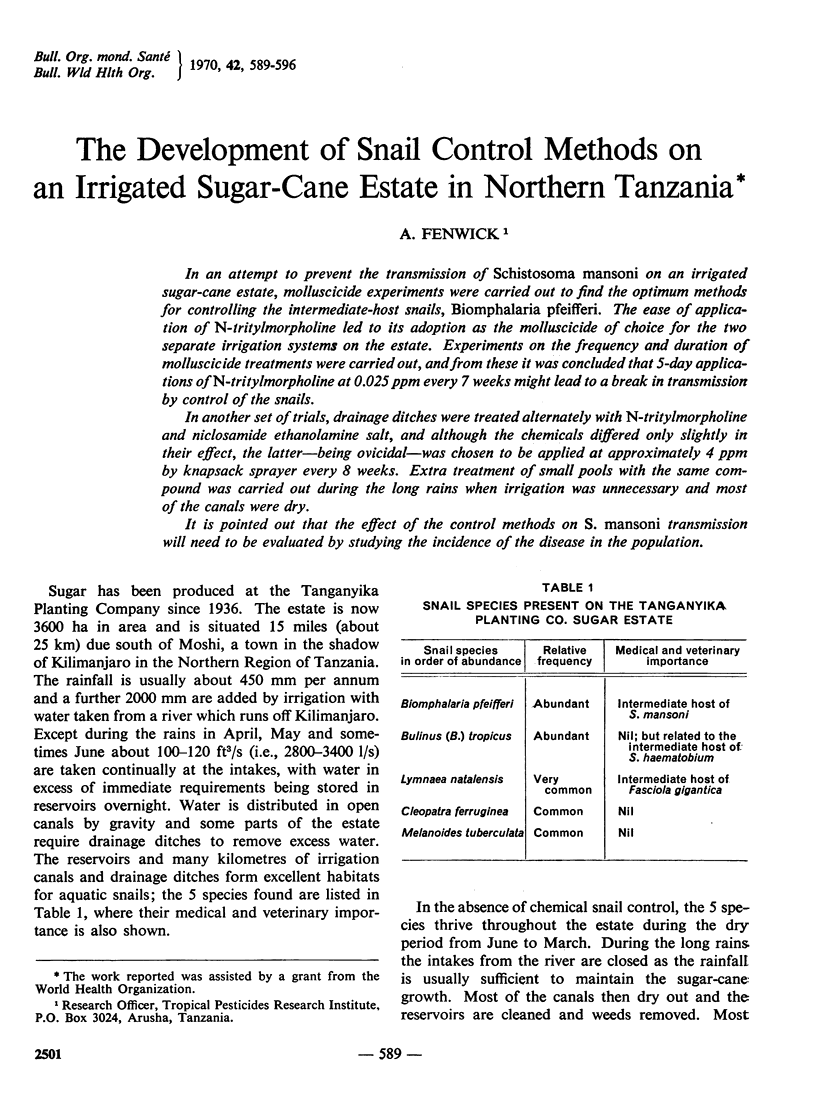


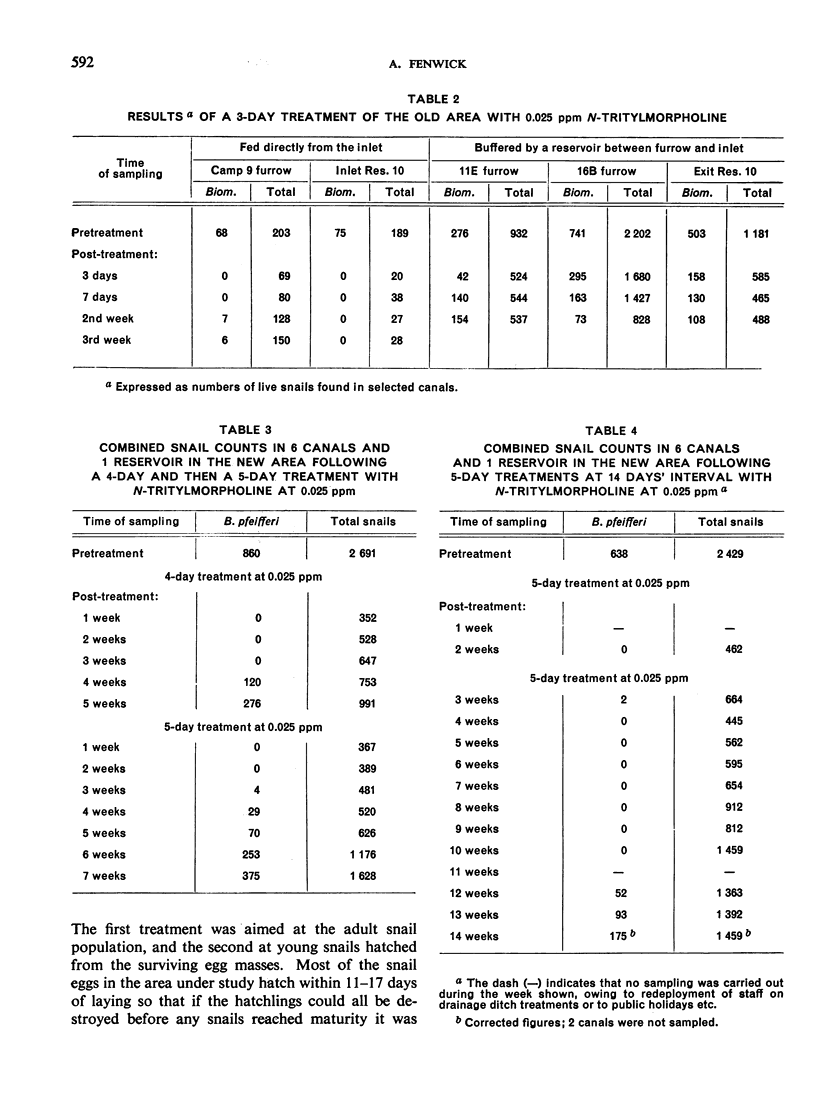
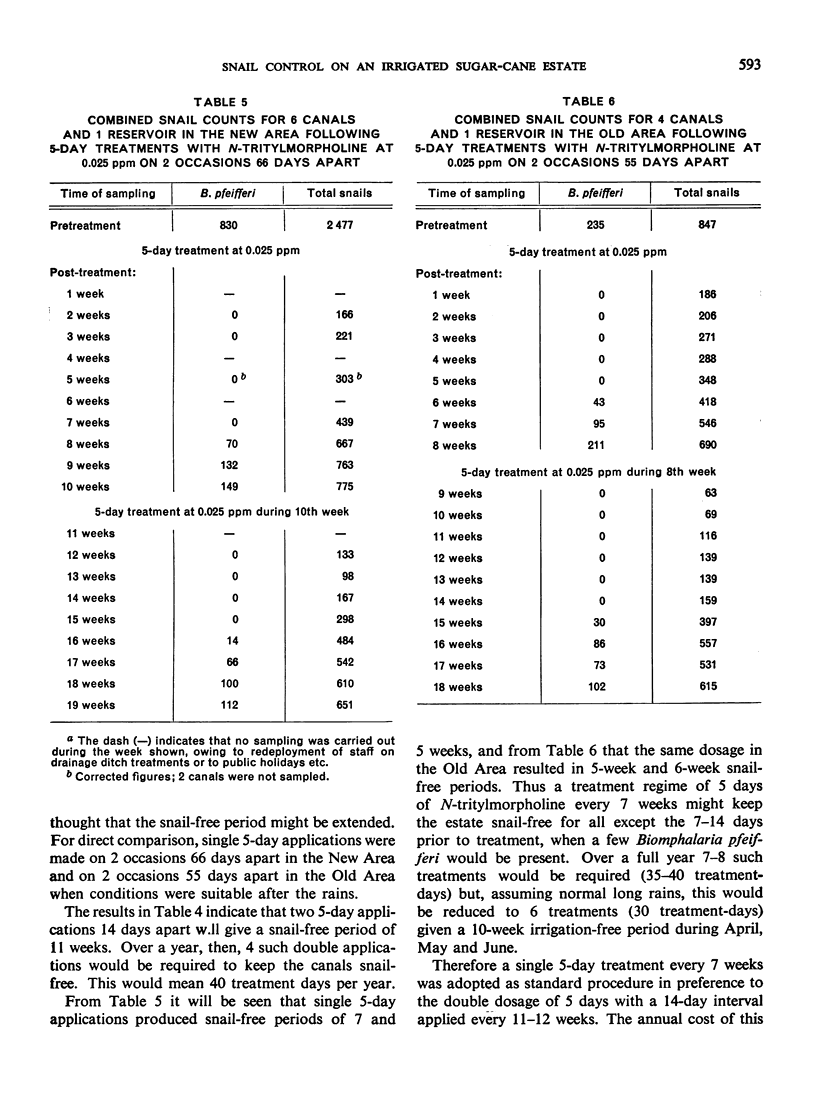
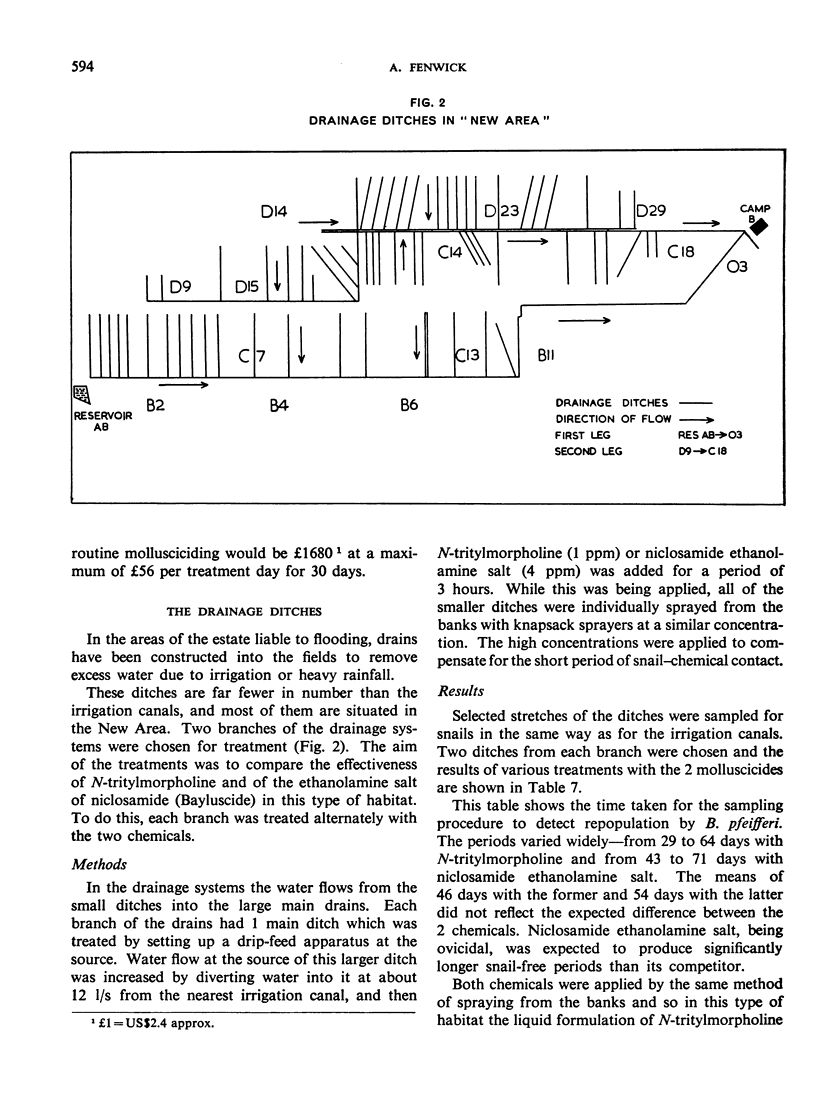
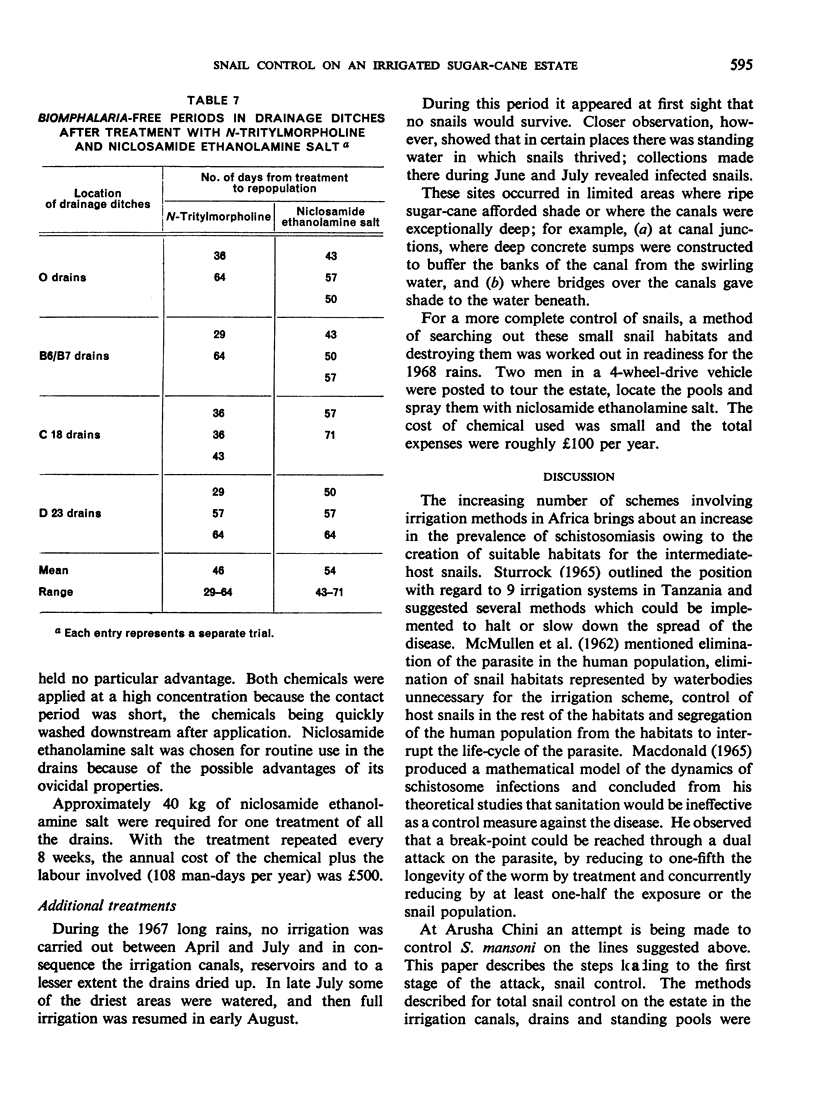

Selected References
These references are in PubMed. This may not be the complete list of references from this article.
- CROSSLAND N. O. A LARGE-SCALE EXPERIMENT IN THE CONTROL OF AQUATIC SNAILS BY THE USE OF MOLLUSCICIDES ON A SUGAR ESTATE IN THE NORTHERN REGION OF TANGANYIKA. Bull World Health Organ. 1963;29:515–524. [PMC free article] [PubMed] [Google Scholar]
- CROSSLAND N. O. A mud-sampling technique for the study of the ecology of aquatic snails, and its use in the evaluation of the efficacy of molluscicides in field trials. Bull World Health Organ. 1962;27:125–133. [PMC free article] [PubMed] [Google Scholar]
- Crossland N. O. Field trials to evaluate the effectiveness of the molluscicide N-tritylmorpholine in irrigation systems. Bull World Health Organ. 1967;37(1):23–42. [PMC free article] [PubMed] [Google Scholar]
- Macdonald G. The dynamics of helminth infections, with special reference to schistosomes. Trans R Soc Trop Med Hyg. 1965 Sep;59(5):489–506. doi: 10.1016/0035-9203(65)90152-5. [DOI] [PubMed] [Google Scholar]
- Paulini E., Camey T. Experiencias de laboratório e de campo com o moluscicida experimental SHELL WL 8008. Rev Bras Malariol Doencas Trop. 1964 Oct-Dec;16(4):493–498. [PubMed] [Google Scholar]
- STURROCK R. F. THE DEVELOPMENT OF IRRIGATION AND ITS INFLUENCE ON THE TRANSMISSION OF BILHARZIASIS IN TANGANYIKA. Bull World Health Organ. 1965;32:225–236. [PMC free article] [PubMed] [Google Scholar]


